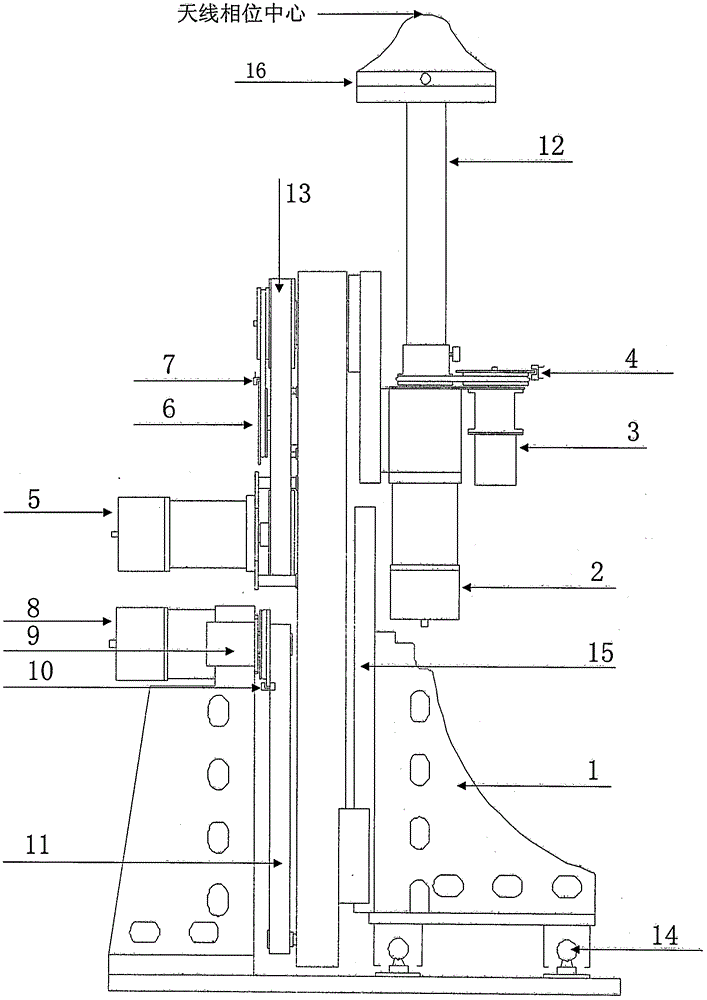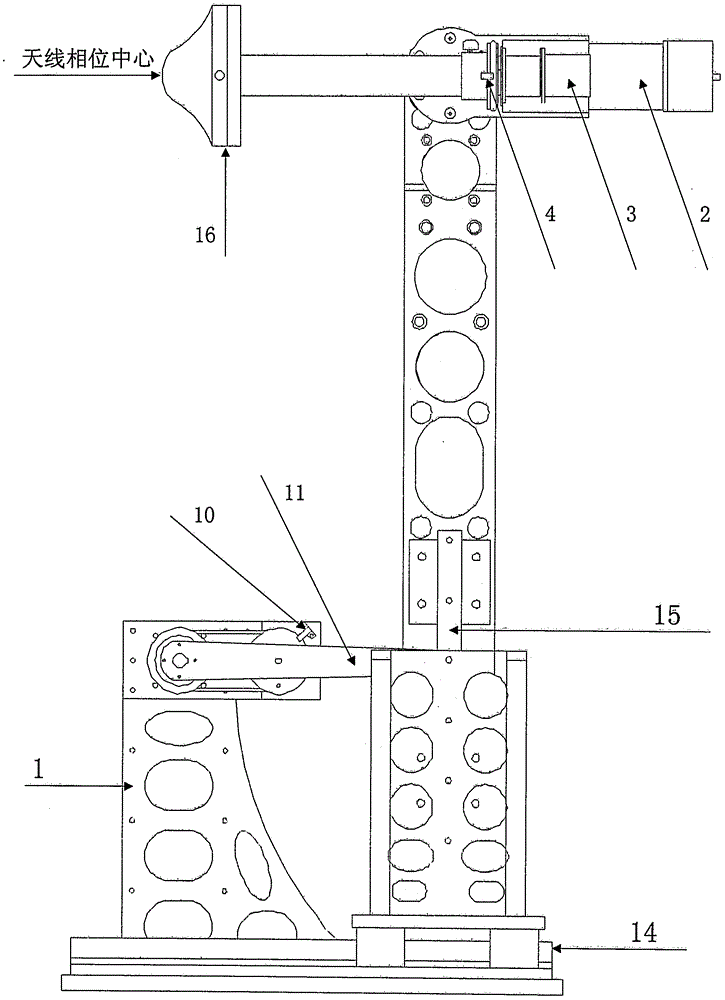Antenna test robot of two degrees of freedom
A technology with a degree of freedom and robotics, applied to antennas, electrical components, etc., can solve the problems of large antenna test interference, large equipment components, difficult installation and debugging, etc., and achieve the effect of high cost, compact structure, and convenient transportation
- Summary
- Abstract
- Description
- Claims
- Application Information
AI Technical Summary
Problems solved by technology
Method used
Image
Examples
Embodiment Construction
[0020] The two-degree-of-freedom antenna test robot has two independent degrees of freedom of movement, the azimuth movement degree of freedom and the pitch movement degree of freedom. Compensation movement is used to compensate for the phase center deviation caused by the movement of the pitch axis, and does not generate independent degrees of freedom in itself. By setting the given value of the angular position of the azimuth axis (input range 0.0°~360.0°), the azimuth axis drive system will drive the azimuth axis to rotate. During the movement, the angular position of the azimuth axis will be monitored and uploaded by the angular position detection sensor in real time. , the robot control system controls the rotation of the azimuth axis according to the given value of the angular position of the azimuth axis and the feedback value. The rotation accuracy is 0.1°, and the movement speed is adjustable from 1° / s to 20° / s. If the azimuth movement exceeds the normal operating ran...
PUM
 Login to View More
Login to View More Abstract
Description
Claims
Application Information
 Login to View More
Login to View More - R&D
- Intellectual Property
- Life Sciences
- Materials
- Tech Scout
- Unparalleled Data Quality
- Higher Quality Content
- 60% Fewer Hallucinations
Browse by: Latest US Patents, China's latest patents, Technical Efficacy Thesaurus, Application Domain, Technology Topic, Popular Technical Reports.
© 2025 PatSnap. All rights reserved.Legal|Privacy policy|Modern Slavery Act Transparency Statement|Sitemap|About US| Contact US: help@patsnap.com


